Pennywort
A lovely addition to any salad with its succulent, delicate flavour.
| Hedgerow Type | |
| Common Names | Pennywort, Navelwort, Wall Pennywort, Penny Pies |
| Scientific Name | Umbilicus rupestris |
| Season Start | Mar |
| Season End | Oct |
Leaves
The leaves grow in rosettes and are round, usually with shallow scalloped edges, a ‘navel’ or depression in the middle and are quite fleshy and succulent.
Flowers
The flowers grow from and cover a tall, thick and upright flower stem and can be yellow/green sometimes with a red or pink tinge.
The plant flowers in May and its small, green fruit ripen through the Summer.
Possible Confusion
With its fleshy, succulent leaves and stem growing into a ‘navel’ in the middle of the leaf and growing from rock crevices it is difficult to confuse Pennywort with any other plants.
Taste
Some say a bit like peas although we think it is pleasant but usually quite neutral although from different rocks and walls and times of year they can sometimes be very bitter.
Frequency
Fairly common.
Collecting
Care should be taken when removing the leaves as the whole plant can easily be detached from where it is growing and it should only be harvested when there is an abundance of the plant and only a couple of leaves taken from each rosette.
Medicinal Uses
Can be used to cool minor burns and grazes by removing the lower surface skin on a leaf and applying it to the wound.
Other Facts
From the stonecrop family, Crassulaceae, Navelwort and its scientific name, Umbilicus, refer to the ‘belly button’ in the middle of the leaf.
Pennywort refers to the leaves slight penny like shape.



 (26 votes, average: 3.73 out of 5)
(26 votes, average: 3.73 out of 5)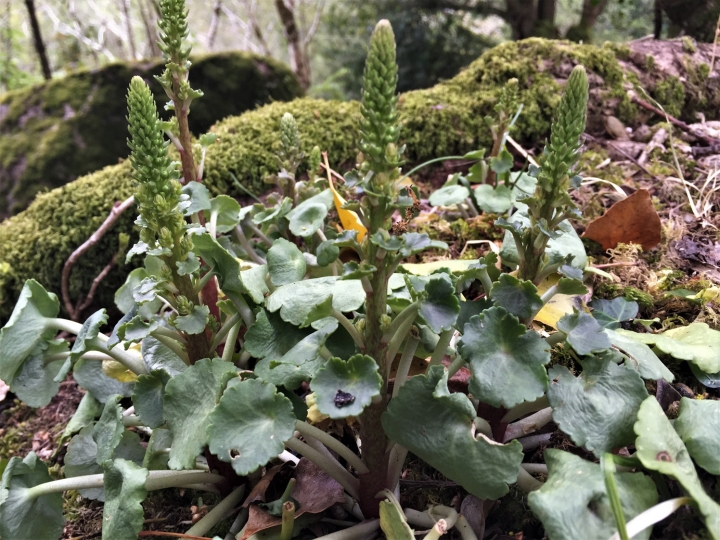















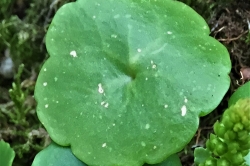
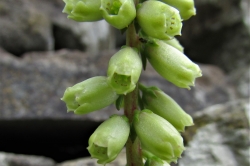
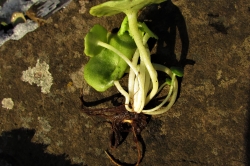
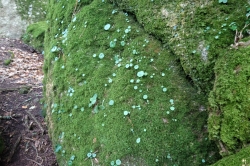






6 comments for Pennywort
Excellent thank you really interesting
Wonderful, clear information when I need to be sure I have found a good vitamin source, not a toxic plant. I will add some to my steamed vegetable hot pot.
Im testing catkin tea, now. As promised, catkins a bit bitter, if you just pick and eat.. But 5 steeped in boiled water/brown sugar overnight, nicer, for me, than ordinary tea.
I feel very lucky to know about this wild nutrition and found it on the rock wall while on an evening walk. I have aryhritis so you know about how happy I am thanks a million universe 🌟🌟🌟🌟🌟
There is quite an abundance growing on the Coastal Path, 30 seconds walk from my house, and so I’m able to pick a few leaves to put into my salads – lovely !
It’s very good for insect bits too or nettle stings as far as I know it has natural antihistamines.
Pennywort is also excellent for healing phlebitis (inflammation of a vein), much better than ibuprofen.